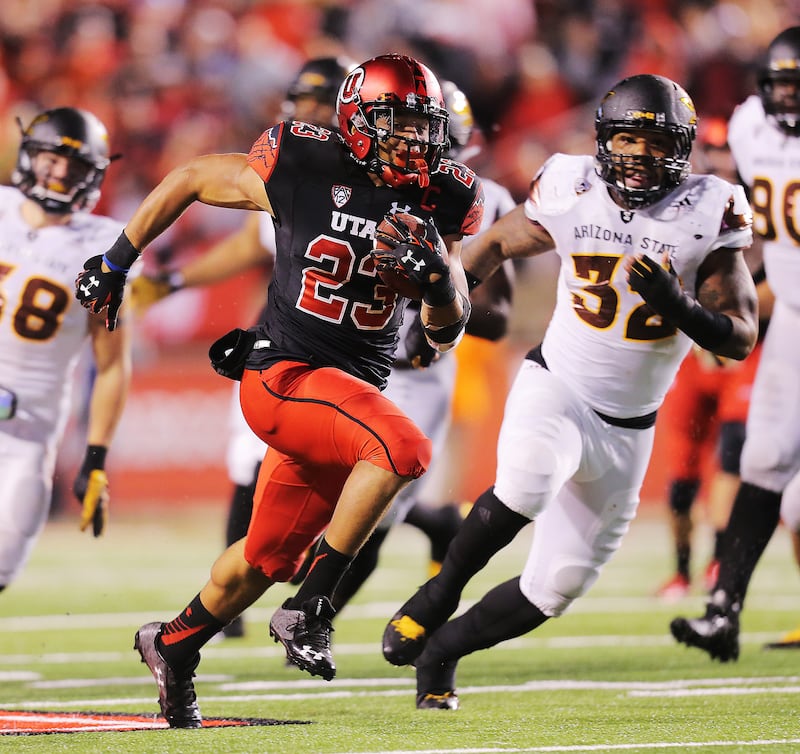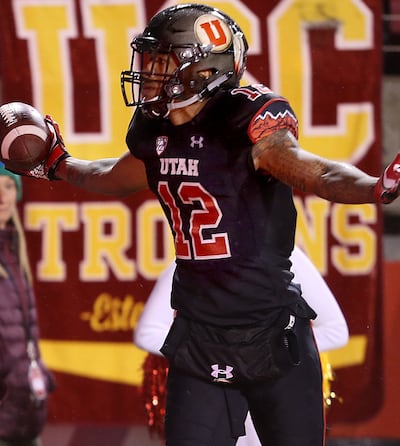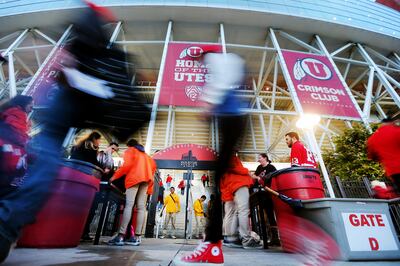By almost any measure Utah’s Big Pac-12 Football Adventure is turning out about as well as anyone could have expected, and that’s the odd thing about it.
On paper, it shouldn’t work.
The odds are stacked against them. For one thing, there’s an inherent geographical problem. California is one of the top three recruiting grounds in the country, along with Texas and Florida. To compete in college football, you need California recruits. The challenge for the Utes: The Pac-12 is largely a California-based league — UCLA, USC, Stanford and Cal have been in the league for about 100 years and form the heart of the league — and three other schools are on the West Coast — Oregon, Oregon State and Washington.
That means Utah must compete for California recruits in its conference rivals’ backyards, somehow convincing high school players to leave the schools they grew up around and move to cold, snowy, mountainous Utah.
This is to say nothing of the smaller population base and its newcomer status in an established league.
Somehow the Utes have made it work, and then some. They boast a Pac-12 record of 42 wins, 39 losses in their first nine seasons in the league; they are 5-2 in bowl play. In the last five years, they have finished first in the South Division three times — a tie in 2015 and outright titles in 2018 and 2019 — while finishing in the top-25 rankings four times. In each of the last two seasons they advanced to the Pac-12 championship game, where they lost. That one game was all that stood between them and the Rose Bowl.

Since 2015 they rank fifth in conference wins — USC 32, Washington 30, Stanford 30, Washington State 29, Utah 28, Oregon 26, Arizona State 21, UCLA 18, Cal 17, Colorado 16, Arizona 15 and Oregon State 8.
To appreciate Utah’s transition into the conference, compare it to the performance of the other team that joined the league at the same time, in 2011. Colorado has compiled a record of 20-61 — 22 fewer wins than Utah.
The Utes have discovered that the Pac-12 isn’t quite as formidable as everybody thought it was when they entered the league. The league likes to bill itself as “The Conference of Champions,” but that hasn’t been true for decades unless they’re talking about the Olympic sports. Out of a possible 24 berths in the national playoff, the Pac-12 has claimed just two, the worst of the P5 conferences. The league hasn’t had a consensus national football champion since USC split the title with LSU in 2003 (USC’s 2004 title was vacated by the NCAA for rules violations).
The Pac-12 somehow brought prestige to Utah when it joined the league, but it’s largely a vestige from long-ago glory years. The name schools no longer cause fear in their opponents. USC — formerly Tailback U — is mediocre. UCLA, based in the heart of recruiting heaven, has been an enigma for decades. Stanford has its moments, as do Washington and Oregon.

For Utah, the Pac-12 hasn’t been that much different than the Mountain West Conference, their former home. But there’s that prestige and the TV contract and opportunity, although you could argue that it is actually more difficult for the Utes to reach an elite bowl game than it was when they were in the Mountain West (remember, they finished unbeaten and in the top four of the final national rankings in both 2004 and 2008 and played in what were then considered to be “playoff” bowl games).
The Utes have managed to pilfer talent from their rivals’ backyards — they had 33 Californians on the 2019 roster, as well as 11 players from Texas and seven from Florida. They rarely sign what would be considered blue-chip players, but they have developed their recruits. Here are the Pac-12 players taken in the NFL draft the last five years.
24 — Washington
23 — USC
22 — UCLA
22 — Stanford
19 — Utah
13 — Oregon
12 — Arizona State
9 — Cal
8 — Washington State
8 — Oregon State
6 — Colorado
4 — Arizona

Utah can also compete with the Pac-12 in the stands. The Utes’ average attendance of 46,462 in 2019 ranked sixth, but with a couple of caveats. Utah’s stadium ranks only 10th in capacity seating, and Utah, along with Oregon and Washington, are the only schools that even come close to filling their stadiums to capacity.
Another note: Since 2011 — Utah’s inaugural Pac-12 season — attendance has dropped tremendously across the league, by 5,000-13,000. Only Washington, Utah, UCLA and Washington State (barely) have increased their average attendance. Utah, which claimed 56 straight sellout crowds heading into the 2019 season, is planning to add another 5,100 seats to Rice-Eccles Stadium, which virtually assures it will raise its attendance figures.
All the way around, the Utes have made a successful transition to the Pac-12.


